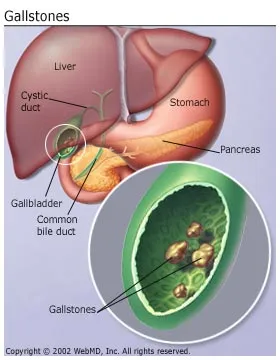Brain stem tumors are perhaps the most dreaded cancers in pediatric oncology, owing to their historically poor prognosis, yet they remain an area of intense research. Brain stem tumors account for about 10 to 15% of childhood brain tumors. Peak incidence for these tumors occurs around age 6 to 9 years. The term brain stem glioma is often used interchangeably with brain stem tumor. More precisely, glioma encompasses tumor pathology types such as ganglioglioma, pilcytic astrocytoma, diffuse astrocytoma, anaplastic astrocytoma, and glioblastoma multiforme.
Rarely, other tumor pathologies such as atypical teratoid/rhabdoid tumor (ATRT), primitive neuroectodermal tumor (PNET)/embryonal tumor, and hemangioblastoma occur at the brain stem. These entities are quite different from brain stem gliomas, and the following comments do not apply.
Classification: Brain stem gliomas have been grouped in the past according to their pathology and location within the brain stem. Terms found in the medical literature include diffuse intrinsic gliomas, midbrain tumors, tectal gliomas, pencil gliomas, dorsal exophytic brain stem tumors, cervicomedullary tumors, focal gliomas, and cystic tumors. A simpler way to classify these tumors is by two categories: diffuse intrinsic pontine glioma and focal brain stem glioma.
Symptoms: Children with DIPG present with ataxia (clumsiness or wobbliness), weakness of a leg and/or arm, double vision, and sometimes headaches, vomiting, tilting of the head, or facial weakness. Double vision (diplopia) is the most common presenting symptom for these tumors. Symptoms are usually present for 6 months or less at time of diagnosis. Patients with focal brain stem gliomas may display some of the same symptoms, although not the usual combination of ataxia, weakness, and double vision. Duration of symptoms is often greater than 6 months before the focal brain stem tumor is diagnosed.
Diagnosis: Throughout the United States, brain magnetic resonance imaging (MRI), with and without gadolinium contrast, remains the “gold standard” for diagnosis of brain stem gliomas. Biopsy is seldom performed outside specialized biomedical research protocols for DIPG, unless the diagnosis of this tumor is in doubt. Biopsy may be indicated for brain stem tumors that are focal or atypical, especially when the tumor is progressive or when surgical excision may be possible.
Diffuse intrinsic pontine gliomas (DIPG) insinuate diffusely throughout the normal structures of the pons (the middle portion of the brain stem), sometimes spreading to the midbrain (the upper portion of the brain stem) or the medulla (the bottom portion of the brain stem). The term diffuse intrinsic glioma is synonymous. By pathology, these tumors are most often a diffuse (sometimes referred to as fibrillary) astrocytoma (World Health Organization [WHO] grade II) or its higher-grade counterparts, anaplastic astrocytoma (WHO III) and glioblastoma multiforme (WHO IV). Very rarely these tumors start in the medulla or midbrain.
Focal brain stem gliomas–perhaps 20% or more of brain stem gliomas–include tumors that are more circumscribed, focal, or contained at the brain stem. These tumors may have cysts or grow out from the brain stem (i.e., exophytic). These tumors more often arise in the midbrain or medulla, rather than the pons. Pathology for these tumors is frequently pilocytic astrocytoma (WHO I) or ganglioglioma (WHO I), although rarely diffuse astrocytoma (WHO II).
Treatment: Since brain stem gliomas are relatively uncommon and require complex management, children with such tumors deserve evaluation in a comprehensive cancer center where the coordinated services of dedicated pediatric neurosurgeons, child neurologists, pediatric oncologists, radiation oncologists, neuropathologists, and neuroradiologists are available. In particular, for DIPG, because of its rarity and poor prognosis, children and their families should be encouraged to participate in clinical trials attempting to improve survival with innovative therapy.
Neurosurgery: Surgery to attempt tumor removal is usually not possible or advisable for DIPG. By their very nature, these tumors invade diffusely throughout the brain stem, growing between normal nerve cells. Aggressive surgery would cause severe damage to neural structures vital for arm and leg movement, eye movement, swallowing, breathing, and even consciousness.
Surgery with less than total removal can be performed for many focal brain stem gliomas. Such surgery often results in quality long-term survival, without administering chemotherapy or radiotherapy immediately after surgery, even when a child has residual tumor. Surgery is particularly useful for tumors that grow out (exophytic) from the brain stem.
Focal brain stem tumors that arise at the top back of the midbrain (tectal gliomas) should be managed conservatively, without surgical removal. Nevertheless, shunt placement or ventriculostomy for hydrocephalus (see below) is frequently necessary. These tumors have been described to be stable for many years or decades without any intervention other than shunting.
Radiotherapy: Conventional radiotherapy, limited to the involved area of tumor, is the mainstay of treatment for DIPG. A total radiation dosage ranging from 5400 to 6000 cGy, administered in daily fractions of 150 to 200 cGy over 6 weeks, is standard. Hyperfractionated (twice-daily) radiotherapy was used previously to deliver higher irradiation dosages, but such did not lead to improved survival. Radiosurgery (e.g., gamma knife, Cyberknife) has no role in the treatment of DIPG.
Chemotherapy and other drug therapies: The role of chemotherapy in DIPG remains unclear. Studies to date with chemotherapy have shown little improvement in survival, although efforts (see below) through the Children’s Oncology Group (COG), Pediatric Brain Tumor Consortium (PBTC), and others are underway to explore further the use of chemotherapy and other drugs. Drugs utilized to increase the effect of radiotherapy (radiosensitizers) have thus far shown no added benefit, but promising new agents are under investigation. Immunotherapy with beta-interferon and other drugs to modify biologic response have shown disappointing results. Intensive or high-dose chemotherapy with autologous bone marrow transplant or peripheral blood stem cell rescue has not demonstrated any effectiveness in brain stem gliomas and is not recommended. Future clinical trials may incorporate medicines to interfere with cellular pathways (signal transfer inhibitors) or other approaches that alter the tumor or its environment. For more information and a listing of the most up-to date trials, the reader is encouraged to check the websites of the National Institutes of Health clinical trials registry , the National Childhood Cancer Foundation/COG, and the PBTC .
In focal brain stem gliomas, chemotherapy, such as carboplatin/vincristine, procarbazine/CCNU/vincristine, or temozolomide, may be useful in children whose tumors are progressive and not surgically accessible. In children younger than age 3 years, chemotherapy may be preferable to radiotherapy because of the effects of irradiation on the developing brain.
Recurrent or Progressive Brain Stem Gliomas: Regrettably, DIPG has a high rate of recurrence or progression. At relapse, a variety of Phase I and Phase II drug trials are available through the national research consortiums COG and PBTC, as well as through individual pediatric institutions. Oral etoposide, temozolomide, and cyclophosphamide are drug options sometimes utilized outside a study.
Prognosis: DIPG often follows an inexorable course of progression, despite therapy. A large majority of children die within a year of diagnosis. Focal brain stem glioma, however, can carry an exceptional prognosis, with long-term survivals frequently reported.
Other Management Issues: Shunts: Less than half of children with brain stem tumors will develop obstructive hydrocephalus, requiring a shunt or ventriculostomy, at some time during the course of their illness. Shunts are simple mechanical tubing devices that divert cerebrospinal fluid trapped in the brain’s ventricles above the tumor to another location in the body, typically the abdomen (peritoneum), as in a ventriculoperitoneal shunt. A ventriculostomy is the surgical creation of an internal channel, often from the third ventricle to a lower portion of the brain, to allow cerebrospinal fluid to drain beyond the tumor.
Steroids: Dexamethasone (brand name Decadron) is a steroid drug frequently administered to brain stem tumor patients for the swelling and “tightness” of their tumor at the base of their skull. Dexamethasone must be used sparingly! Dexamethasone should never be prescribed prophylactically or “just in case.” That is, this steroid is an extremely effective medicine for symptomatic swelling associated with treatment of a brain stem glioma, particularly with radiotherapy. However, dexamethasone is not necessary unless a child has symptomatic swelling. Dexamethasone has a number of side effects which include mood changes, insomnia, weight gain, fluid retention, glucose instability, high blood pressure, and increased susceptibility to infection.














 Commonly used first is an ultrasonic instrument which uses tickling vibrations to knock larger pieces of tartar loose. It also sprays acooling mist of water while it works to wash away debris and keep the area at a proper temperature. The device typically emits a humming or high pitched whistling sound. This may seem louder than it actually is because the sound may get amplified inside your head, just like when you put an electric toothbrush into your mouth.
Commonly used first is an ultrasonic instrument which uses tickling vibrations to knock larger pieces of tartar loose. It also sprays acooling mist of water while it works to wash away debris and keep the area at a proper temperature. The device typically emits a humming or high pitched whistling sound. This may seem louder than it actually is because the sound may get amplified inside your head, just like when you put an electric toothbrush into your mouth. Once all the surfaces are smooth, the dental worker may polish your teeth. Polishing is done using a slow speed handpiece with a soft rubber cup that spins on the end. Prophylaxis (short for prophy) paste – a special gritty toothpaste-like material – is scooped up like ice cream into the cup and spun around on the teeth to make them shiny smooth.
Once all the surfaces are smooth, the dental worker may polish your teeth. Polishing is done using a slow speed handpiece with a soft rubber cup that spins on the end. Prophylaxis (short for prophy) paste – a special gritty toothpaste-like material – is scooped up like ice cream into the cup and spun around on the teeth to make them shiny smooth.